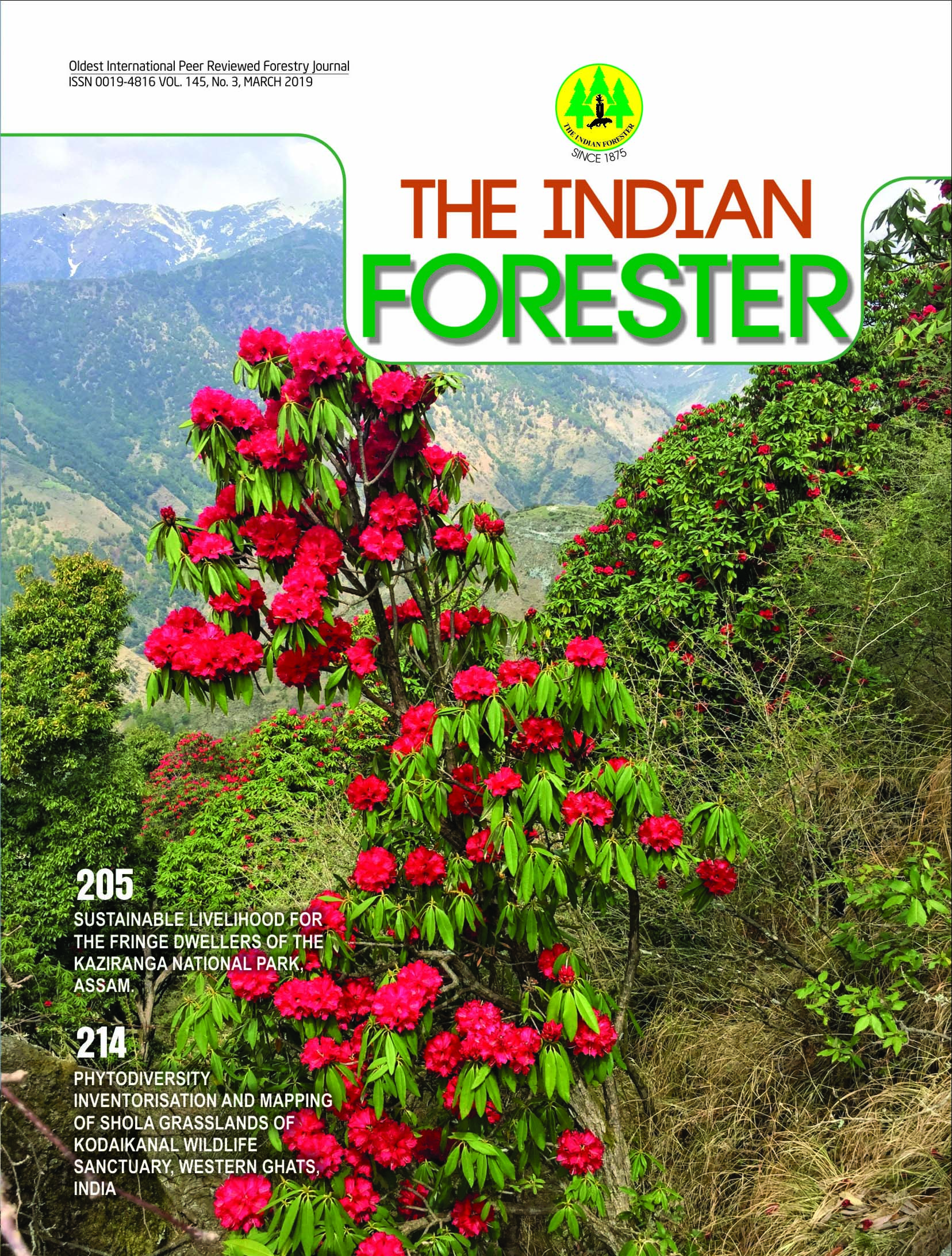Sustainable Livelihood for the Fringe Dwellers of the Kaziranga National Park, Assam
DOI:
https://doi.org/10.36808/if/2019/v145i3/144450Abstract
Concept of sustainable livelihood takes a comprehensive and integrated approach to poverty. It views the poor people as drivers with their own sets of priorities. This community-based attempt, focusing on its needs, assets and choices of livelihood options, requires arousal of consciousness among the members. The purpose is to integrate the cultural and entrepreneurial efforts into professionalism and ensure benefit-sharing among the community members. The belongingness of the members is further enhanced by involving them in Park-related activities so that they never feel to be distanced. Interaction with local people is needed to assess their requirements and also involve them as potent partners in protecting the Kaziranga National Park (KNP) from threats and looking ahead for their sustainable livelihood. The rights of the local people on the common property resources in and around the Park are also to be honoured. A strategy needs to be adopted through: (i) nurturing the Traditional Knowledge-base, etc. to utilize the bioresources, (ii) preservation of bio-diversity and conservation in a scientific way and (iii) proper rehabilitation and sustainable livelihood options for the fringe-dwellers.References
Anon. (2010-2012). Text books of Environment Management): Sikkim Manipal University, MBA. Gangtok, Sikkim.
Anon. (2017). 'Text books of Intellectual Property Rights': IGNOU, New Delhi.
Backley R. (1994). A framework for Tourism. Annals of Tourism Research, 21 (3): 661-665.
Bhatt S. (April 2005). 'Opportunities and Limitations for Benefit sharing in select World Heritage sites, India'
Bhattacharya B.K. (2017). The women who live alongside rhinos in India: Mongabay-News & Inspiration from Natures Frontline: PP #-#
Bhaumik S. (2005) Kaziranga's centenary celebrations. BBC News.
Brandon K. (1996). Ecotourism and Conservation - A review of key issues. World Bank Environment Dept. (Paper No. 033), Washington DC.
Brohman J. (1996). New Directions in Tourism for Third World Development. Annals of Tourism Research, 23(I): 4870.
Chambers R. (1983, 1984). Rural development: putting the last first. Longman. London and New York.
Chambers R. (1995). 'Poverty and livelihoods: whose reality counts? Environment and Urbanization, 7(1):173-204.
Devi M.K. (2012). Ecotourism in Assam. A Promising Opportunity for Development. South Asian J. Tourism and Heritage, 5(1):179-192.
Ebregt A. and Pol De Greve (2000). Buffer zone and their management-Policy and Best practices for terrestrial ecosystem in developing countries: International Agricultural Centre, Wageningen, Netherlands.
Gupta A. and Kakati N. (2011). Community Engagement for Conservation around Kaziranga National Park [Ashoka Trust for Research in Ecology and the Environment (ATREE) implementing UNESCO's World Heritage Bio-diversity Project in Assam]: 31-34.
Hussain S.A., Barthwal S.C., Badola R., Rahman S.M.T., Rastogi A., Tuboi C. and Bhardwaj A.K. (2012). An analysis of livelihood linkages of tourism in Kaziranga National Park, a natural World Heritage Site in India. [www.icun.org/parks] Inter. J. Protected Areas and Conservation: Issue= PARKS, 18(2):32-43.
Saikia A. (2009). The Kaziranga National Park: Dynamics of Social and Political History; Assam. Journal: Conservation and Society, 7(2):113-129.
Shrivastava R.J. and Heinen J.T. (2005). Migration and Home Gardens in the Brahmaputra Valley, Assam, India. J. Ecological Anthropology, 9(1): 20-34.
Shrivastava R.J. and Heinen J.T. (2007). A Microsite Analysis of Resource Use around Kaziranga National Park, India: Implications for Conservation and Development Planning. J. Environment & Development, 16(2): 207-226
Shrivastava R.J. and Heinen J.T. (2009). An analysis of conservation attitudes and awareness around Kaziranga National Park, Assam, India: Implications for conservation and development. Population and Environment, 30(6): 261-274.
Talukdar S. (2005). Waiting for Curzon's kin to celebrate Kaziranga. The Hindu. https://www.researchgate.net/publication/313226717_Intellec tual_ Property_Rights_on_
Traditional_Knowledge_and_their_Significance_in_Sustainable_Societal_Development. http://megadiversity.nic.in./docs/pdf/living_root_bridges.
Other References (not Indicated In The Body Of The Text) From Where Information Has Ben Accessed:
http:// Wikipedia.org/wiki- (a number of pages on the relevant subjects)
Tourism-related literature, pamphlets, etc. of the Government of Assam.
UNDP (2009). India’s National Capacity Needs-Selfassessment Report & Action Plan, GEF, M/o Environment & Forest, GoI, New Delhi : 9-139.
UNESCO - IUCN (2003). Enhancing our Heritage project: Monitoring and managing for success in natural World Heritage sites: Initial management Effectiveness Evaluation Report, Kaziranga National Park, Assam: 1-78.
Downloads
Downloads
Published
How to Cite
Issue
Section
License
Unless otherwise stated, copyright or similar rights in all materials presented on the site, including graphical images, are owned by Indian Forester.





